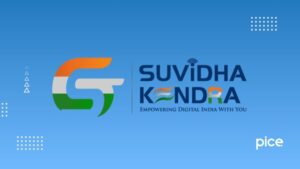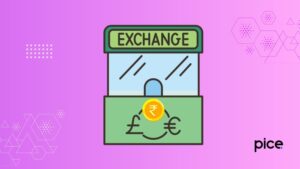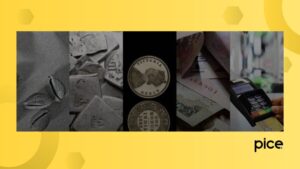What is B2B Invoice in GST?
- 17 Aug 24
- 14 mins
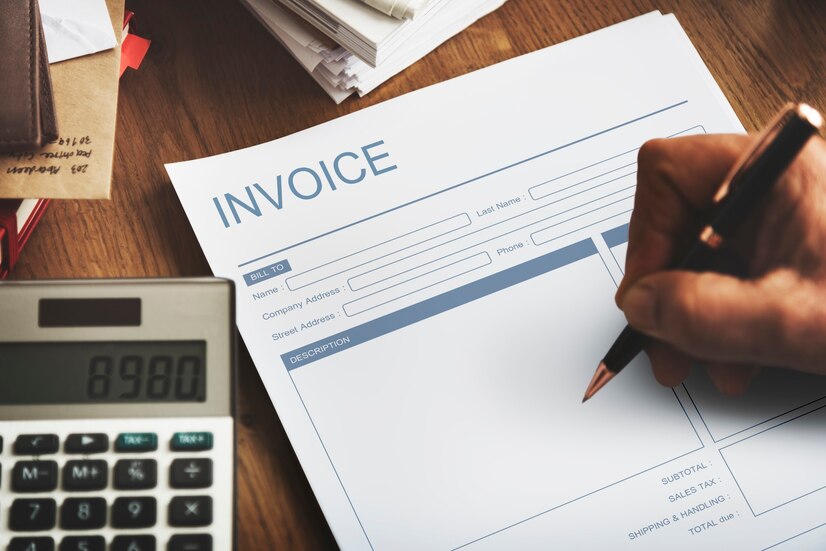
What is B2B Invoice in GST?
Key Takeaway
- B2B invoices are essential for documenting transactions between businesses, ensuring both accuracy in billing and compliance with tax regulations such as GST.
- Key components of a B2B invoice include detailed business information, invoice specifics like unique numbers and dates, and comprehensive product or service descriptions along with pricing and payment terms.
- Generating a B2B invoice involves collecting necessary information, selecting an invoice template, detailing the transaction, and specifying payment terms to ensure timely compliance.
- Online invoicing enhances efficiency, reduces errors, and facilitates better cash flow management through features like real-time tracking and secure, global access.
- Electronic B2B invoicing not only streamlines processes and reduces costs but also improves environmental impact and compliance with updated tax laws.
In the world of business transactions, the B2B (Business-to-Business) invoice is a critical document. It serves as a formal request for payment, detailing goods or services provided from one business to another. Unlike business-to-consumer (B2C) invoices, B2B invoices are typically more complex due to the nature of business agreements and tax implications such as GST.
What is B2B Invoicing?
B2B invoicing, or Business-to-Business invoicing, is a fundamental process within the commercial transactions between companies. It involves one business issuing an invoice to another business for the sale of goods or services. These invoices are detailed documents that list the specifics of the transaction including the quantities, prices, total costs, payment terms, and other relevant information necessary for proper accounting and tax compliance.
Key Components of a B2B Invoice:
- Business Information: Both the seller's and buyer's contact details, including names, addresses, and tax identification numbers.
- Invoice Details: A unique invoice number, the date of issue, and the due date for payment.
- Product or Service Description: Detailed descriptions of the products or services provided, including quantities and per unit costs.
- Pricing Structure: Total amount payable, including breakdowns of taxes like GST, if applicable.
- Payment Terms: Detailed terms of payment such as payment methods accepted, payment due dates, and any penalties for late payment.
Importance of B2B Invoicing:
B2B invoices are crucial for maintaining financial records and managing cash flow in business operations. They serve as a legal document that can be used for auditing purposes and are essential for both parties to ensure compliance with tax and business regulations. Invoices also play a critical role in the accounts payable and receivable processes, helping businesses track their sales and expenses accurately.
Overall, B2B invoicing is not just about requesting payment but is a vital component of the broader financial and regulatory framework that supports commercial activities between businesses.
Steps for Generating a B2B Invoice
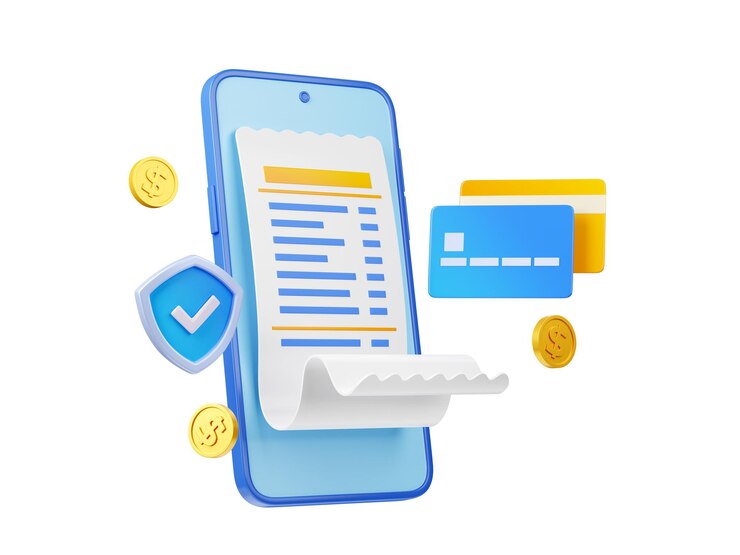
Creating a B2B (Business-to-Business) invoice involves several key steps to ensure accuracy and compliance with financial and tax regulations. Here’s a detailed guide on how to generate an effective B2B invoice:
Step 1: Gather Information
Before generating an invoice, collect all necessary information including:
- Your business details: Name, address, contact information, and tax registration number.
- Customer’s business details: Name, address, contact information, and tax registration number.
- Transaction details: Date of the transaction, delivery date of goods or services, and terms of sale.
Step 2: Choose an Invoice Template
Select an appropriate invoice template that suits your business needs. Many accounting software programs offer customizable templates which can simplify the process and ensure you include all required fields.
Step 3: Add Unique Invoice Number
Each invoice should have a unique invoice number for tracking and reference. This number is crucial for accounting purposes and helps both the supplier and customer manage their records effectively.
Step 4: Include Dates
Clearly state the date the invoice is issued and the payment due date. These dates help manage cash flow and ensure timely payment.
Step 5: Detail the Products or Services Provided
List each product or service that was provided. For each item, include:
- Description: What was sold, including any model numbers or specific details.
- Quantity: The number of items provided.
- Unit price: The cost per item.
- Total price: The total cost for the quantity of each item.
Step 6: Calculate the Total Amount Due
Sum up all the individual costs of the products or services provided to determine the total amount due. Include any applicable taxes such as VAT or GST, and add them to the subtotal to arrive at the final amount.
Step 7: Include Payment Terms
Specify the terms of payment:
- Payment methods accepted: Such as bank transfers, checks, online payments, etc.
- Payment deadline: Define the time frame within which the payment should be made.
- Late payment penalties: If applicable, detail the consequences of late payment to encourage timely compliance.
💡If you want to pay your GST with Credit Card, then download Pice Business Payment App. Pice is the one stop app for all paying all your business expenses.
Step 8: Add Additional Notes
Include any other relevant information that the customer needs to know. This could be details about warranty, return policy, or a thank-you note for doing business.
Step 9: Review and Send
Double-check the invoice for any errors or omissions. Ensure all the details are correct and clearly stated. Once reviewed, send the invoice to the customer, either through email, direct online submission via accounting platforms, or through traditional mail, depending on your and your customer's preferences.
Steps in B2B Transactions
Business-to-Business (B2B) transactions are complex processes involving multiple steps that ensure efficient and effective exchanges between companies. These transactions are crucial for the smooth operation of supply chains and for fostering long-term business relationships. Here’s a step-by-step breakdown of a typical B2B transaction:
Step 1: Identification of Needs
The process begins when one company identifies a need that can be met by another company's products or services. This need could be for raw materials, manufactured parts, professional services, or operational technologies.
Step 2: Supplier Search and Selection
The buyer researches potential suppliers to find the best match for their requirements. This may involve soliciting recommendations, conducting online searches, or evaluating suppliers at industry events. The aim is to find a reliable partner that can offer quality products or services at competitive prices.
Step 3: Request for Proposal (RFP)
The buyer sends a Request for Proposal (RFP) to selected suppliers, inviting them to submit a bid to supply the required products or services. The RFP includes detailed specifications, quantities, delivery expectations, and other criteria necessary for the suppliers to prepare accurate proposals.
Step 4: Proposal Evaluation and Negotiation
Once proposals are received, the buyer evaluates them based on quality, cost, delivery time, and after-sales service. This stage may involve negotiations with one or more suppliers to finalize terms that best meet the buyer’s needs.
Step 5: Contracting
After selecting a supplier, both parties negotiate and sign a formal contract. This contract legally binds them to the terms of the transaction, including pricing, delivery schedules, quality standards, and other key elements.
Step 6: Order Fulfillment
The supplier begins the process of order fulfillment. This might involve manufacturing products, assembling materials, or scheduling service delivery. Throughout this phase, the supplier may provide the buyer with updates to ensure transparency.
Step 7: Delivery and Inspection
The supplier delivers the goods or services as per the contract. Upon receipt, the buyer inspects the delivery to ensure that everything meets the stipulated requirements. Any discrepancies or issues are addressed and resolved at this stage.
Step 8: Invoicing and Payment
Following acceptance of the delivery, the supplier issues an invoice to the buyer. The buyer processes this invoice and makes payment according to the agreed terms, often within 30 to 90 days.
Step 9: Performance Review and Relationship Management
After the transaction, both parties often review the process to assess the performance of the supply arrangement. This review helps in identifying improvement areas and strengthening the business relationship for future transactions.
Step 10: Record Keeping
Both parties update their respective financial and operational records with details of the transaction. Proper record keeping supports regulatory compliance and aids in future decision-making processes.
Advantages of Generating Online Invoices
In today's digital age, online invoicing has become a vital tool for businesses, particularly in B2B transactions. The shift from traditional paper-based invoicing to online methods offers numerous benefits that can improve efficiency, accuracy, and the overall financial health of a company. Here are some of the key advantages of generating online invoices:
1. Increased Efficiency
Online invoicing significantly speeds up the billing process by automating many of the tasks involved in invoice creation. Businesses can generate and send invoices instantly, which not only saves time but also accelerates the payment process. Automation also reduces the manpower needed for invoicing tasks, freeing up staff for other productive activities.
2. Reduced Errors
Automated systems help minimize human errors in invoice preparation, such as typos, miscalculations, or omissions. Online invoicing software typically includes features that automatically calculate totals, taxes, and discounts, ensuring accuracy in every transaction. This precision is crucial for maintaining trustworthy relationships with business partners and clients.
3. Cost Savings
Online invoicing cuts down on the costs associated with paper, printing, and postage. Since everything is handled digitally, businesses can save substantial amounts on these supplies and services. Moreover, the reduction in paper usage not only saves money but also supports environmental sustainability efforts.
4. Improved Record Keeping
Digital invoices can be organized and stored electronically, making it easier to manage financial records and access them when needed. This organized digital archive simplifies the process of tracking transactions and searching for specific invoices, which is especially useful during tax season or financial audits.
5. Enhanced Security
Online invoicing offers better security than traditional methods. Digital invoices can be encrypted, password protected, and securely stored in the cloud. This protects sensitive financial information from theft, loss, and natural disasters, ensuring that data remains safe and confidential.
6. Real-Time Tracking
With online invoicing, businesses can track the status of each invoice in real time. They can see when an invoice is delivered, viewed, and paid. This immediate visibility helps companies manage their cash flow more effectively and follow up promptly on late payments or discrepancies.
7. Global Accessibility
Online invoices can be accessed from anywhere in the world, provided there is internet connectivity. This is particularly beneficial for businesses with remote teams or those who deal with international clients. It ensures that invoicing processes are not hindered by geographical boundaries, facilitating smoother global operations.
8. Customization and Branding
Online invoicing tools often allow businesses to customize their invoices, adding logos, brand colors, and personalized messages. This helps maintain brand consistency and professionalism in all financial communications.
Benefits of Electronic B2B Invoicing

Electronic B2B invoicing is revolutionizing how businesses handle financial transactions with other businesses. This digital approach to invoicing offers numerous benefits that can improve efficiency, enhance compliance, and boost relationships between trading partners. Here are some key benefits of adopting electronic B2B invoicing:
| Benefit | Description |
|---|---|
| Streamlined Processes | Automates the entire invoicing process, reducing manual entry and speeding up transaction cycles. |
| Cost Reduction | Saves on paper, printing, postage, storage, and administrative expenses. |
| Enhanced Accuracy | Reduces human error with automated calculations and entries, ensuring accuracy and consistency. |
| Improved Cash Flow Management | Facilitates quicker payments with real-time tracking of invoice delivery and viewing. |
| Easier Compliance | Simplifies adherence to tax laws and regulations, and updates systems with current tax rates. |
| Better Environmental Impact | Reduces ecological footprint by eliminating paper-based processes and promoting green practices. |
| Stronger Security | Enhances data security with features like encryption and secure access controls. |
| Global Scalability | Removes geographic barriers, allowing instant global transactions and supporting international growth. |
| Integrated Systems | Allows integration with other business systems like accounting software and ERP for unified management. |
This table summarizes the benefits of electronic B2B invoicing, highlighting how it can improve various aspects of business operations and financial management.
Can you revise invoices issued before GST?
Yes, it is possible to revise invoices that were issued before the implementation of the Goods and Services Tax (GST) in India. However, there are specific conditions and procedures that need to be followed to ensure that the revisions comply with GST regulations. Here’s a brief overview:
When Revisions Are Necessary:
Revisions might be needed to correct errors in the original invoices or to update them to reflect changes in pricing, tax calculations, or business terms. These revisions can help ensure that businesses maintain accurate records and meet compliance requirements under the new GST regime.
Procedure for Revising Pre-GST Invoices:
- Issue a Credit or Debit Note: If changes need to be made to a pre-GST invoice, businesses typically issue a credit note or a debit note. These notes serve as a record that adjusts the amounts previously invoiced.
- Document the Changes: Clearly document what changes have been made compared to the original invoice. This documentation is crucial for both accounting purposes and for maintaining transparency with customers and tax authorities.
- Update GST Filings: Any changes that affect the taxable amount need to be reflected in GST filings. This means adjusting the output tax liability in the GST returns accordingly. It’s important to ensure that these adjustments are made in the period during which the revision is being done.
- Communicate with the Customer: Inform the customer about the revisions and provide them with the new credit or debit note. This helps in maintaining trust and ensures that both parties’ financial records are synchronized.
Legal Considerations:
The ability to revise invoices may also depend on the specific rules and time limits set by the GST Council. Typically, revisions should be made within a specified time frame from the end of the financial year in which the original invoice was issued or before the relevant GST annual return is filed, whichever is earlier.
 By
By 





